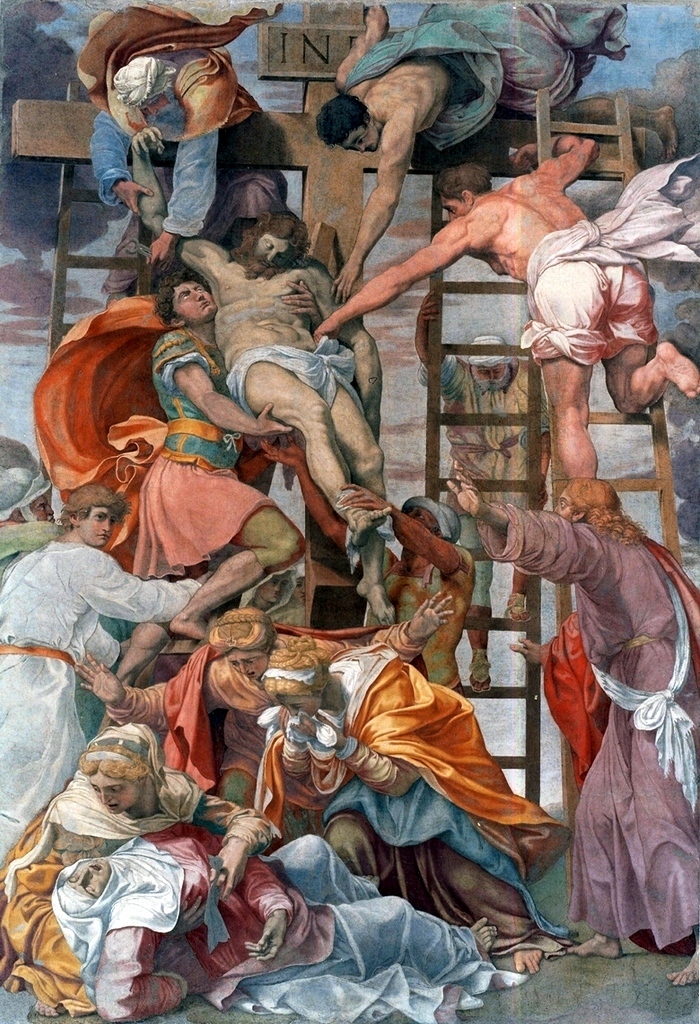Mannerist painter and sculptor Daniele Ricciarelli da Volterra died on 4 April 1566 in Rome. Daniele initially trained with the Sienese painter Sodoma, and then with Baldassarre Peruzzi and Perin del Vaga in Rome. Here, Daniele befriended Michelangelo, whose influence marked his whole career. Their relationship drew much criticism on Daniele’s account, although it was not based on a passive imitation of Michelangelo’s style: Daniele indeed posed as the artist’s second self. Buonarroti helped him gaining prestigious commissions and provided him with drawings, which Daniele used as starting points for his own inventions, as in the case of the Orsini Chapel in Trinità dei Monti. The only known surviving part of the decoration is the altarpiece of the Deposition.
In 1547 Daniele succeeded Perino in the Sala Regia, but with Paul III’s death he lost the commission and the decoration was later completed by others. Daniele’s major works also include the Della Rovere chapel in Trinità dei Monti, the Massacre of the Innocents for the Church of Saint Peter in Volterra (now in Florence), and David Killing Goliath, a two-sided painting long attributed to Michelangelo. Upon the latter’s death (1564), Daniele was assigned the task to cover the nudities of the Last Judgment in the Sistine Chapel, earning the infamous nickname of Il Braghettone (“The Breeches Maker”).
In his late career Daniele devoted himself to sculpture, working on a bronze equestrian statue of Henry II of France (unfinished) and on a series of bronze busts of Michelangelo.
Further reading: Morten Steen Hansen, In Michelangelo’s Mirror: Perino del Vaga, Daniele da Volterra, Pellegrino Tibaldi, University Park: Pennsylvania State University Press, 2013.
Deposition, c. 1545, Trinità dei Monti, Rome.
Madonna with Child, young Saint John the Baptist and Saint Barbara, c. 1548, Casa Pannocchieschi d’Elci, Siena.
Massacre of the Innocents, 1557, Uffizi Gallery, Florence.
David killing Goliath, 1550-1555, Musée du Louvre, Paris.
Assumption of the Virgin, c. 1555, Della Rovere Chapel, Trinità dei Monti, Rome.
Bust of Michelangelo, 1562-1564, Gallerie dell’Accademia, Florence.






